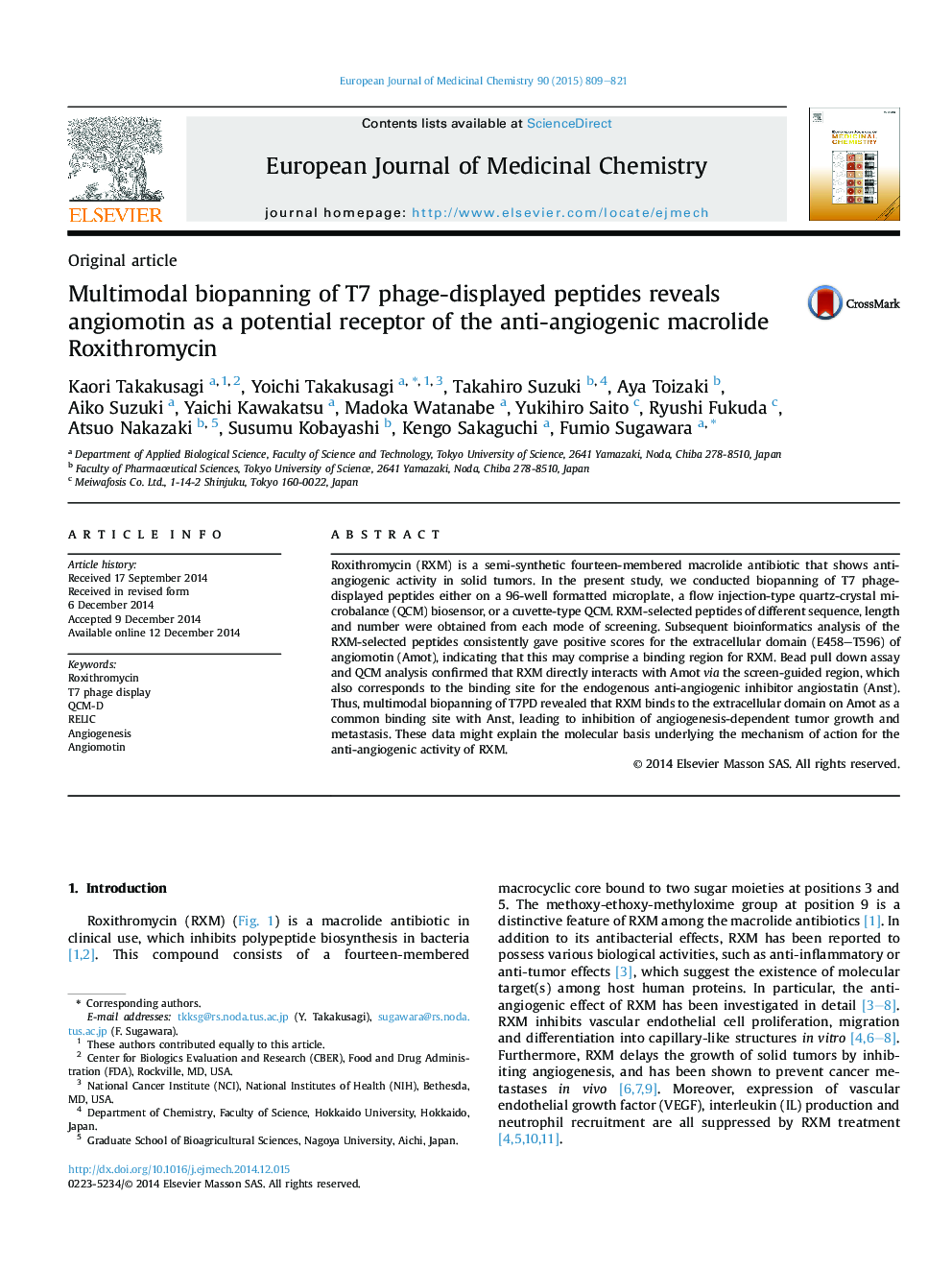| Article ID | Journal | Published Year | Pages | File Type |
|---|---|---|---|---|
| 1395524 | European Journal of Medicinal Chemistry | 2015 | 13 Pages |
•Roxithromycin (RXM) derivatives were synthesized for T7 phage display (T7PD) biopanning.•Biopanning using three different strategies independently identified RXM-recognizing (poly)peptides.•Bioinformatics analysis using the (poly)peptides indicated angiomotin (Amot) as a potential RXM-binding protein.•Binding assays confirmed the direct interaction between RXM and Amot via the extracellular domain.
Roxithromycin (RXM) is a semi-synthetic fourteen-membered macrolide antibiotic that shows anti-angiogenic activity in solid tumors. In the present study, we conducted biopanning of T7 phage-displayed peptides either on a 96-well formatted microplate, a flow injection-type quartz-crystal microbalance (QCM) biosensor, or a cuvette-type QCM. RXM-selected peptides of different sequence, length and number were obtained from each mode of screening. Subsequent bioinformatics analysis of the RXM-selected peptides consistently gave positive scores for the extracellular domain (E458–T596) of angiomotin (Amot), indicating that this may comprise a binding region for RXM. Bead pull down assay and QCM analysis confirmed that RXM directly interacts with Amot via the screen-guided region, which also corresponds to the binding site for the endogenous anti-angiogenic inhibitor angiostatin (Anst). Thus, multimodal biopanning of T7PD revealed that RXM binds to the extracellular domain on Amot as a common binding site with Anst, leading to inhibition of angiogenesis-dependent tumor growth and metastasis. These data might explain the molecular basis underlying the mechanism of action for the anti-angiogenic activity of RXM.
Graphical abstractFigure optionsDownload full-size imageDownload as PowerPoint slide
